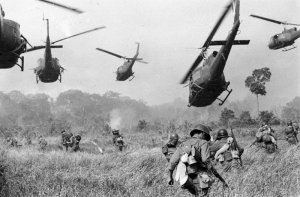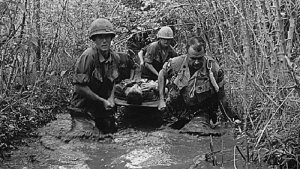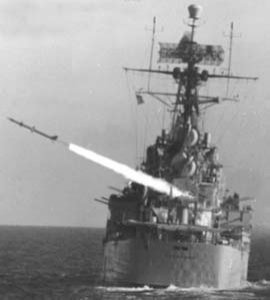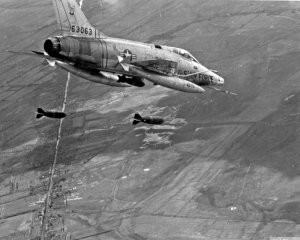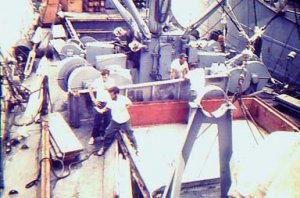You are using an out of date browser. It may not display this or other websites correctly.
You should upgrade or use an alternative browser.
You should upgrade or use an alternative browser.
The Vietnam War
- Thread starter FastTrax
- Start date
Sassycakes
SF VIP
- Location
- Pennsylvania
Brings back such sad memories from friends we lost during that war. Thankfully my husband was in the Navy and didn't serve in Vietnam. 
Damaged Goods
Member
- Location
- Maryland
Spit on and called "baby killers" when you came home back then, and today it's "Thank you for your service" when you wear your ball cap with the appropriate insignia at the grocery store.
Go figure.
Go figure.
Don M.
SF VIP
- Location
- central Missouri
I spent 1967 at Takhli AFB in Thailand. I was sure glad that I was in the AF, instead of the Army or Marines. We lost several F105's and pilots during that year, and it was amazing to see the damage that some of the aircraft had sustained, yet managed to get back to the base.
My worst memory was one day when a young 1st Lt. stopped by the shop to ask a couple of questions about the weapons control system. He was getting ready to go on his 1st mission the next day. He was a great guy, and we had a nice conversation. A few days later, I found out that he was shot down on his 1st mission.
My worst memory was one day when a young 1st Lt. stopped by the shop to ask a couple of questions about the weapons control system. He was getting ready to go on his 1st mission the next day. He was a great guy, and we had a nice conversation. A few days later, I found out that he was shot down on his 1st mission.
One of my uncles served in Thailand as well with the Air Force.I spent 1967 at Takhli AFB in Thailand. I was sure glad that I was in the AF, instead of the Army or Marines. We lost several F105's and pilots during that year, and it was amazing to see the damage that some of the aircraft had sustained, yet managed to get back to the base.
My worst memory was one day when a young 1st Lt. stopped by the shop to ask a couple of questions about the weapons control system. He was getting ready to go on his 1st mission the next day. He was a great guy, and we had a nice conversation. A few days later, I found out that he was shot down on his 1st mission.
Last edited:
cdestroyer
Member
Don M.
SF VIP
- Location
- central Missouri
We were in Washington, DC, a few years ago, and visited the Vietnam Veterans Memorial. 4 of my old high school mates are listed and honored on that wall.
squatting dog
Remember when... thirty seemed so old.
- Location
- Arkansas, and also Florida
I sometimes wonder if it's just me. 
I haven't been able to bring myself to visit the Vietnam Veterans Memorial wall yet. Kind of like picking an old scab that just won't heal.
I haven't been able to bring myself to visit the Vietnam Veterans Memorial wall yet. Kind of like picking an old scab that just won't heal.
Damaged Goods
Member
- Location
- Maryland
I sometimes wonder if it's just me.
I haven't been able to bring myself to visit the Vietnam Veterans Memorial wall yet. Kind of like picking an old scab that just won't heal.
Seems that most who do visit it turn around with moisture running down their faces.
Understandable.
All those names!
Tish
SF VIP
- Location
- Rural N.S.W. Australia
My Husband may he rest in peace served in Nam.
To all of you, Thank you for your service.
To all of you, Thank you for your service.
Mat
Member
The place has changed so much over the course of 50 years. Most of the Delta in the 60 and 70s was all wetlands and rivers and canals, but today it is wall to wall with people and new dwellings. The rice fields are full and the country is thriving but there is still that overload looking over your shoulder and you don't say anything about them or you might disappear one night. It is strange because the people in charge are not a large group but a very small select group who are protected by the military. A very large bridge was built coming over the Mekong river into Can Tho our old airfield and Group and Battalion Headquarters. It is nothing but a grown over trace now which can still be seen if you happened to fly over it everyday for 3 years. You can see the barracks foundation outlines and the runway still. My airfield 40 miles away is still there with the runway intact, but all the building were completely torn down and new building built. No sign of any military at all or planes, they have nothing there but do not allow you to come into the place.
This movie was TET 68 and the enemy surrounded us from every side but same as Saigon and other good bases we killed more of them than us. The town of Soc Trang was occupied across the second bridge but was pounded by airstrikes and artillery and finally cleared after a lot of destruction. You couldn't take off from either end of the runway but had to get airborne and just make a hard turn left or right and get some altitude or you would be shot. They had 122mm rockets and also 51 caliber machine guns on the final leg entrance. We lost one ship with all 4 crewmen killed and it was only a stones throw from the end of the runway in a winding canal that runs up into Cambodia, named The Tiger Tail.
The audio of the movie was by accident and the person just happened to be making a audio tape to send home when the first attack came in.
This movie was TET 68 and the enemy surrounded us from every side but same as Saigon and other good bases we killed more of them than us. The town of Soc Trang was occupied across the second bridge but was pounded by airstrikes and artillery and finally cleared after a lot of destruction. You couldn't take off from either end of the runway but had to get airborne and just make a hard turn left or right and get some altitude or you would be shot. They had 122mm rockets and also 51 caliber machine guns on the final leg entrance. We lost one ship with all 4 crewmen killed and it was only a stones throw from the end of the runway in a winding canal that runs up into Cambodia, named The Tiger Tail.
The audio of the movie was by accident and the person just happened to be making a audio tape to send home when the first attack came in.
FastTrax
Well-known Member
The place has changed so much over the course of 50 years. Most of the Delta in the 60 and 70s was all wetlands and rivers and canals, but today it is wall to wall with people and new dwellings. The rice fields are full and the country is thriving but there is still that overload looking over your shoulder and you don't say anything about them or you might disappear one night. It is strange because the people in charge are not a large group but a very small select group who are protected by the military. A very large bridge was built coming over the Mekong river into Can Tho our old airfield and Group and Battalion Headquarters. It is nothing but a grown over trace now which can still be seen if you happened to fly over it everyday for 3 years. You can see the barracks foundation outlines and the runway still. My airfield 40 miles away is still there with the runway intact, but all the building were completely torn down and new building built. No sign of any military at all or planes, they have nothing there but do not allow you to come into the place.
This movie was TET 68 and the enemy surrounded us from every side but same as Saigon and other good bases we killed more of them than us. The town of Soc Trang was occupied across the second bridge but was pounded by airstrikes and artillery and finally cleared after a lot of destruction. You couldn't take off from either end of the runway but had to get airborne and just make a hard turn left or right and get some altitude or you would be shot. They had 122mm rockets and also 51 caliber machine guns on the final leg entrance. We lost one ship with all 4 crewmen killed and it was only a stones throw from the end of the runway in a winding canal that runs up into Cambodia, named The Tiger Tail.
The audio of the movie was by accident and the person just happened to be making a audio tape to send home when the first attack came in.
WOW!!!!! My GOD you must've dug deep down to find the strength to carry on day after day well knowing that death awaited you day after day under the canopy. I do commend you.
fuzzybuddy
SF VIP
- Location
- The Sticks, Northeast PA.
I'm a Civil War nut,. I watch WWI and WWII documentaries. While I was never in Vietnam, I was in the U.S. Navy 68-72. I just can't watch anything about that war.
Some really bad memories looking at the pictures, but thanks for posting. I think that for some of us that were there, we need to think back and remember what we did over there, but most importantly, we need to remember those that didn't come back with us.
I think every man and woman that was over there left a little piece of themselves there. I seldom have any dreams about being over there and for that, I am thankful.
I think every man and woman that was over there left a little piece of themselves there. I seldom have any dreams about being over there and for that, I am thankful.
Last edited:
peramangkelder
Well-known Member
- Location
- Fleurieu Peninsula South Australia
This is a very good movie
peramangkelder
Well-known Member
- Location
- Fleurieu Peninsula South Australia
I had not long started working when the ANZACS were in Vietnam
When they started coming home our Servicemen and Women were treated so poorly
They were spat on and had paint thrown at them and I remember seeing one of these in Adelaide
I looked on in horror as these brave men and women were treated like something on the sole of your shoe
My grandmother helped a lot of returned servicemen at a Returned Services League Hospital in Adelaide
because so many men and women were suffering PTSD or Battle Fatigue they could barely function
When they started coming home our Servicemen and Women were treated so poorly
They were spat on and had paint thrown at them and I remember seeing one of these in Adelaide
I looked on in horror as these brave men and women were treated like something on the sole of your shoe
My grandmother helped a lot of returned servicemen at a Returned Services League Hospital in Adelaide
because so many men and women were suffering PTSD or Battle Fatigue they could barely function
FastTrax
Well-known Member
'Late afternoon August 18, 1966 South Vietnam – for three and a half hours, in the pouring rain, amid the mud and shattered trees of a rubber plantation called Long Tan, Major Harry Smith and his dispersed company of 108 young and mostly inexperienced Australian and New Zealand soldiers are fighting for their lives, holding off an overwhelming enemy force of 2,500 battle-hardened Viet Cong and North Vietnamese soldiers. With their ammunition running out, their casualties mounting and the enemy massing for a final assault, each man begins to search for the strength to triumph over an uncertain future with honour, decency and courage.'
This is a very good movie
I had not long started working when the ANZACS were in Vietnam
When they started coming home our Servicemen and Women were treated so poorly
They were spat on and had paint thrown at them and I remember seeing one of these in Adelaide
I looked on in horror as these brave men and women were treated like something on the sole of your shoe
My grandmother helped a lot of returned servicemen at a Returned Services League Hospital in Adelaide
because so many men and women were suffering PTSD or Battle Fatigue they could barely function
All wars are bad but the Vietnam war just seemed particularly cruel to everyone except the profiteers.
peramangkelder
Well-known Member
- Location
- Fleurieu Peninsula South Australia
There was a popular song here called 'Horror Movie' by Skykooks
They sang about The Horror Movie and part of the chorus goes
'Horror movie, it's the six-thirty news
Horror movie, it's the six-thirty news'
We often dreaded turning on the TV
They sang about The Horror Movie and part of the chorus goes
'Horror movie, it's the six-thirty news
Horror movie, it's the six-thirty news'
We often dreaded turning on the TV
To this day, I would like to hear Lt. Calley's version of what happened during the My Lai Massacre. Not that it would matter any to me, but I often wonder if what the government presented as evidence of his wrong doings, if it was all true. My reason is because as I read the stories surrounding this event, I learned that a lot of the evidence presented was strictly hearsay testimony and even testimony from witnesses that reported on what they heard. A lot of unanswered questions for me to be able to put it to rest.It took a very long time for the lie of "Two hundred and thirty six Vietcong soldiers were killed and American casualties were light" to finally be revealed for the disinformation campaign perpetrated on the world.


